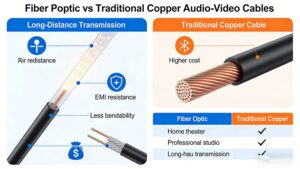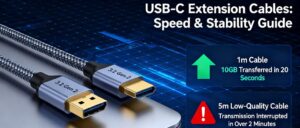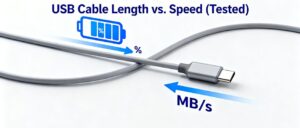
HDMI Ethernet Cables: Future with USB-C & Fiber Optic
Introduction: The Next Frontier of AV Connectivity As 8K streaming, 4K 240Hz gaming, and immersive home theaters become mainstream, high-speed HDMI cables are evolving faster than ever. The launch of HDMI 2.2 and its Ultra96 HDMI cable (96Gbps bandwidth) marks a leap forward, but the future isn’t just about speed—it’s about integration. How does the classic HDMI with Ethernet (HEC) fit into this new era? And how do USB-C “all-in-one” cables and fiber optic HDMI complement, rather than replace, traditional setups? Let’s dive in. 📊 Evolution of HDMI Bandwidth: From 18Gbps to 96Gbps HDMI Standard Bandwidth Key Capabilities HEC Support? HDMI 2.0 (2013) 18Gbps 4K@60Hz,













